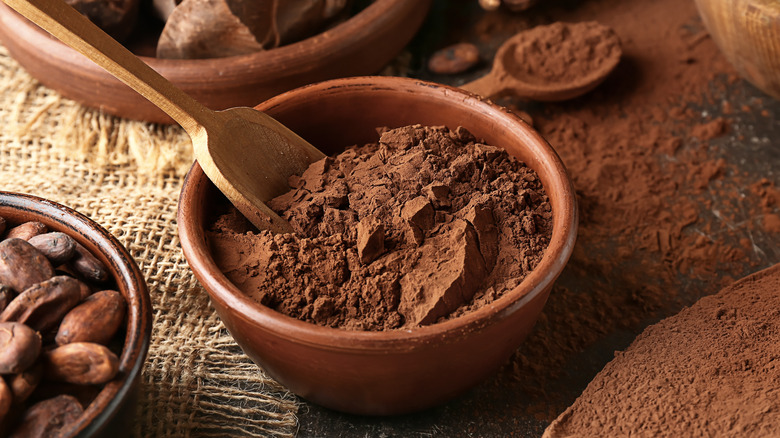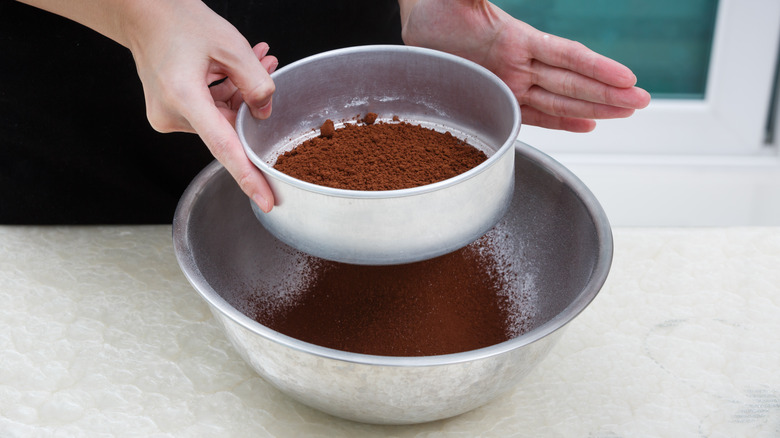The Real Reason It's Important To Sift Cocoa Powder
Sifting — it's one of those cooking tasks that no one relishes because, let's face it, it can feel pretty pointless. Who wants to stop down, find another bowl and a sieve and spend an additional few minutes shaking out your carefully measured flour, powdered sugar, or cocoa powder? It all seems way too fussy — and who knows if it even makes a real difference, right?
While it may feel like a meaningless chore to sift your dry ingredients, it's not. Sifting aerates these finely ground powders, releasing clumps, boosting their volume, and ensuring your measurements are true. Baking without sifting (especially when it comes to cakes, soufflés, and frostings) means your results will be unreliable. Sure, it will sometimes work out, but most often, it results in a denser, more weighed-down end product. That's because sifting lightens the load of that dry ingredient, fluffing it up, making it easier to mix in, and reducing its overall heft, resulting in a light, fluffy, and even moister baked good.
But in the case of cocoa powder, there's a couple more reasons to sift.
Why sift cocoa powder?
Alton Brown says, "Cocoa powder is the pure essence of chocolate, without any added fat or sugar to detract from its inherent goodness." Natural cocoa powder starts with fermented cacao beans roasted and pressed to harvest their cocoa butter (via Washington Post). After this extraction, the now dried remnants of those beans are ground down finely to create cocoa. But this deeply-flavored powder, used in making chocolate and chocolate-flavored treats, can be a temperamental mix-in, clumping into hard little bits in your cupboard as it waits to be used and drying out cakes if not handled correctly.
When using this very dry, finely ground powder optimally in your recipes, it's best to always sift before adding. The Academy of Chocolate Arts explains that unsifted, clumpy cocoa may result in "dry spots" or create "uneven contours" in your final recipe. They recommend banishing cocoa lumps, breaking them up by hand using a sieve to knock loose the clumps and shaking them apart into a fluffy fine powder with a wide bowl beneath. You can also use a flour sifter. Or, in a pinch, you can whisk those lumpy bits into submission.

